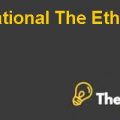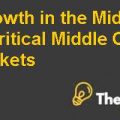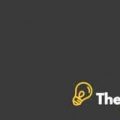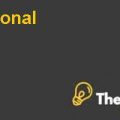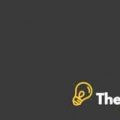
4C’s Stakeholder’s Analysis
Company Analysis
The list of the Coca-Cola Company internal stakeholders has been provided below:
- Shareholders
- Board of Directors (BOD)
- Employees
Board of Directors (BOD)
Board of Directors is a group of independent individuals which deals with the governance-related issues that can occur between the parent Coca-Cola Company and its subsidiaries. The work assigned to the Board of Directors for Coca-Cola is to manage conflicts of interest and to provide stability in the company relating to the governance issues. Currently, there are 15 board members of the Coca-Cola Company and every member is selected according to the guidelines and procedures outlined by the company. Normally, five meetings are held annually for two-day sessions, however if urgent problems call for desperate measures, then the Board members would have to attend meetings for 10 days annually.
Board of Directors wants to ensure that the entire business operations are run smoothly without any kind of conflict of interest. Therefore, the Directors are assigned with the most important task to select a CEO either from within the Board members or from inside the company. Board of Directors at Coca-Cola company are also responsible for evaluating the business strategies and goals that have a major impact on shareholder value (Coca-Cola Company, 2014).
Community Analysis
The list of the Coca-Cola Company external stakeholders has been provided below:
- Bottlers
- Suppliers
- Strategic partners
- Media
- Local communities
Bottlers
The bottling companies are also the strategic partners of the Coca-Cola Company, whose responsibilities are to manufacture, develop its packaging, and to distribute the final product to the end consumer through different retail chains. The task of the bottlers also involves in developing close relationship with customers which includes restaurants, vendors, parks, cinema homes, and different retail stores. As bottlers are the strategic partners of the Coca-Cola Company, therefore they have to follow a local strategy, according to the goals and plans set up by the Coca-Cola Company. By following the strategy, the customers sell Coca-Cola brand at 1.9 million servings a day to increase shareholders' equity (Coca-Cola Company, 2014). However, the strategy devised by the Coca-Cola Company that the goals and plans will be directed from the Center applies the centralized approach where the information flows from top to bottom.
Customer Analysis
The target customer segment for the Diet Coke brand of the Coca-Cola Company for the United States market have been described below:
- Dieters segment
- Real Thing Segment
Dieters Segment
When the higher population of Americans became aware of their diet and wanted to consume a less calorie product, Coke introduced Diet Coke which contains 1-4 calories in one drink. They are the set of consumers who are health conscious and have emphasized on their diet through proper food intake. However, many of these consumers confuse Diet Coke and Coke Zero. The concept of Diet Coke was to introduce a brand that satisfies the need of dieters segments with low calories. However, Coke Zero satisfies the need of those customers who are dieters and as well as they want to have the same exact taste of Coke Classic. Coke Zero contains 0 calories, but tends to have a sharply sweeter taste.
Quantitative Details
Demographics
The most of dieters segment includes women who are very much health conscious and beauty conscious as carbonated drinks increase the chance of obesity and darkens the complexion of the face including the problems of pimples.
Population
According to a research, the diet market is estimated at108 million American individuals and amongst which 82% try to lose weight by themselves through avoiding different product consumption (Tampa, 2014).
Qualitative Details
Needs and Habits
As the Coke brand is mostly targeted towards an age group 16 to 35, therefore their needs and habits differ according their difference in their ages. About 16 to 25 years of customers are still enrolled in either schools, colleges, or high schools. These age groups are still in the phase of study and they are most likely to hang out with their groups. This allows them to eat and drink in restaurants or visiting convenience store or a near vending machines to purchase Coke. From the age group between 25 and 35 have moved to their professional life or still struggling to find a suitable employment. Therefore, the segment that goes to the office often purchase a larger Coke SKU for the entire family. However, the segment that spends most of the time at home due to unemployment have more leisure time to consume more Coke than the segment that goes to the office.....................................
This is just a sample partial case solution. Please place the order on the website to order your own originally done case solution.


